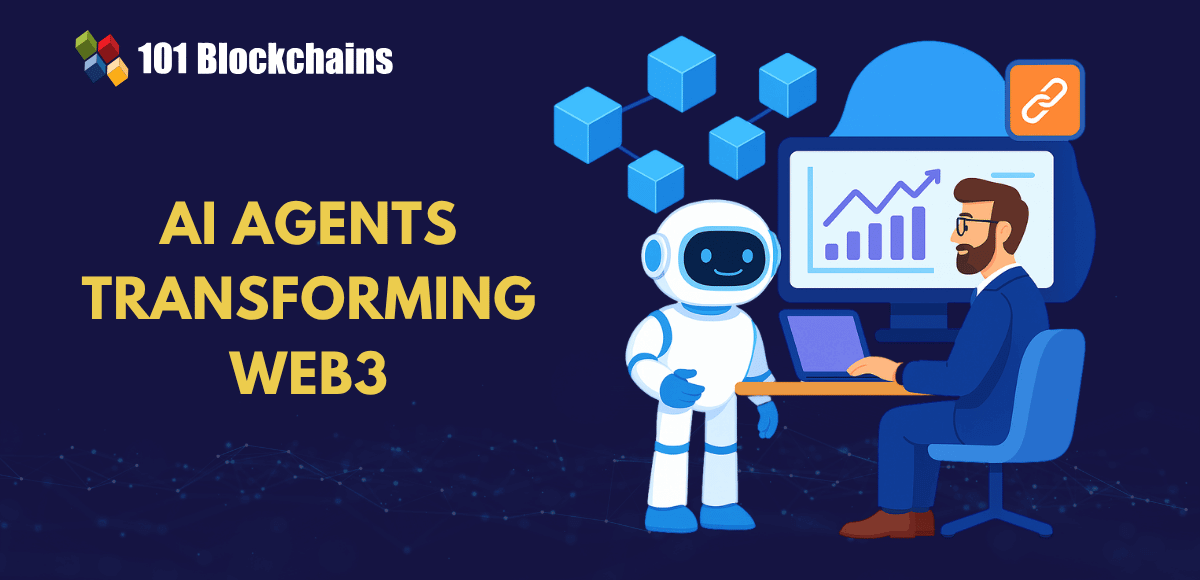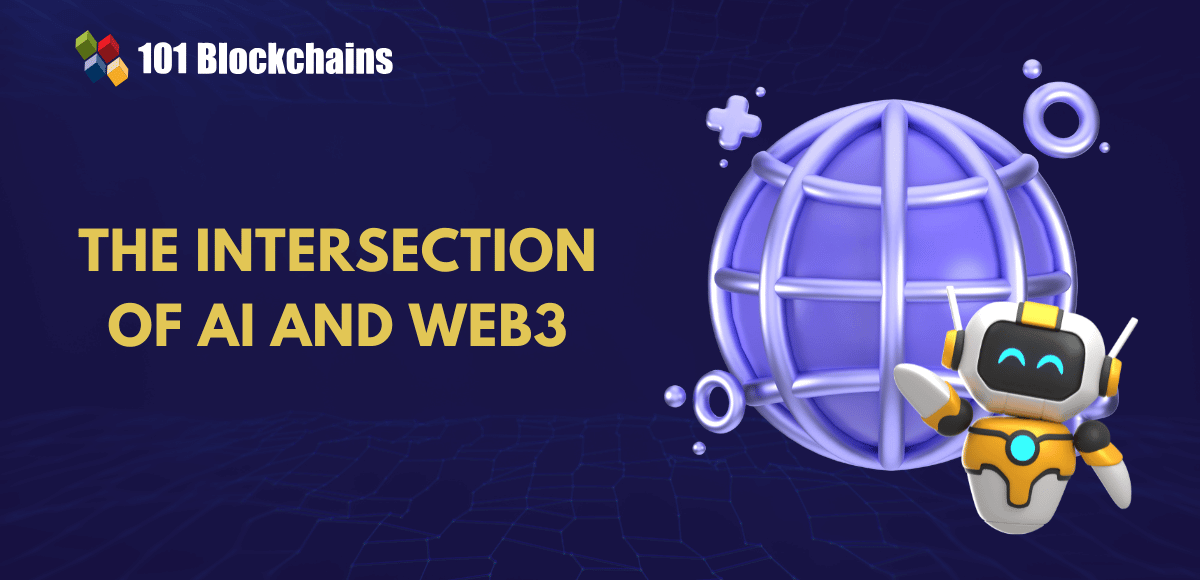Learn how blockchain truly works, master key definitions, and uncover what makes smart contracts so "smart." Dive into the fundamentals, gain valuable insights, and start your blockchain journey today!

- Web3
James Howell
- on September 27, 2023
A Detailed Guide to Web3 Protocols
The decision to enter the world of web3 can be quite challenging in the initial stages. Web3 has been all over social media and the news in the last few years, often hailed as the next stage of the internet. Interestingly, celebrities, tech CEOs, and influences have been claiming that web3 would transform the existing online experiences of users. However, the transition from web2 to web3 without an outline of web3 protocols explained in detail alongside their functionalities could be a difficult task. For example, web2 developers might take some time to familiarize themselves with interoperability, smart contracts, and decentralization. On top of it, the extensive list of web3 protocols in a web3 tech stack could create further confusion.
The advantages of web3 technologies, such as blockchain and decentralized networks, feature the capabilities for emerging as a major component in the future of the internet. A comprehensive review of web3 principles would reveal how web3 technologies can serve the benefits of interoperability, privacy, and security. In addition, web3 also helps in creating new applications which were considered impossible to build. Let us learn more about the web3 protocols and their importance in web3 development with the following discussion.
Fundamentals of Web3
Beginners might assume that web3 is another catchy term for representing blockchain technology. However, blockchain is only one of the components or protocols required for powering up web3. You can think of blockchain as the database for web3, like a conventional web2 application. On the other hand, web3 represents the whole internet ecosystem. The first step for any candidate who wants to learn web3 protocols would focus on a detailed understanding of web3 fundamentals. You can reflect on the evolution of the internet to learn the reasons behind significance of web3.
- The first iteration of the Internet, or web1, features static websites primarily intended for communicating information. During this phase of the internet, people could only ‘read’ or consume information from the internet.
- In the next stage, the world came across Web 2, or the ‘social web,’ characterized by the introduction of social media. Web2 introduced the read-write version of the internet, which focused on using social media networks, e-commerce, and other commercial websites.
- After web2, web3 platforms have been considered the next big step in transforming the internet and the ways in which we use it. Web3 is also known as the semantic web, which extends beyond the traditional read-write functionalities in web2. Web3 could also allow users to exercise ownership alongside trusting and verifying content.
Learn the fundamentals, challenges and use cases of Web3.0 blockchain from the E-book: An Introduction To Web 3.0 Blockchain
Role of Web3 Protocols
The general definition of a protocol paints them as a collection of conditions or rules in a network that it should follow to ensure operations. However, the decentralized web or web3 involves high-value transactions, which include digital assets and cryptocurrencies. Therefore, it is important to reflect on questions like ‘What are web3 protocols?’ and their impact on security, privacy, and functionality in web3.
Web3 protocols are the technologies that play a vital role in powering the decentralized web alongside ensuring the benefits of interoperability, security, and privacy. The protocols such as peer-to-peer networks, decentralized file storage, blockchain, and other web3 technologies support decentralized data sharing and communication.
Curious to develop an in-depth understanding of web3 application architecture? Enroll Now in Web3 Application Development Course!
Variants of Web3 Protocols
You can find multiple types of web3 protocols for different layers in the web3 stack, such as the network layer, blockchain interaction layer, presentation layer, and dApp layer. As the number of new web3 protocols continues growing at an exponential rate, it is important to learn about the following important categories of web3 protocols.
-
API
APIs or Application Programming Interfaces are a crucial requirement for web3 applications. Application Programming Interfaces could help in ensuring direct access to main networks for data retrieval.
-
Front-end Protocols
The outline of a web3 protocols list would be incomplete without pointing out the protocols for facilitating front-end development. Front-end protocols or frameworks play a crucial role in making web3 applications look more appealing to users without compromising on usability.
-
Development Environment
The development environment protocols in web3 help in developing and deploying web3 applications. You can find comprehensive features in the development environment for ensuring that a dApp or web3 solution is ready for deployment.
Excited to develop a comprehensive understanding of Polygon web3 development? Enroll Now in Polygon Web3 Development Course!
-
Identity
The identity protocols are also another top addition among guides on web3 protocols explained for beginners. Identity of users in decentralized web is associated with their wallet, and identity protocols are essential for creating the wallet identities. The identity protocols help users in signing in to multiple dApps directly from their wallet.
-
Storage
With everything being decentralized in web3, it is important to think about the scope for decentralization of storage. The storage protocols in web3 are useful for storing user-sensitive information, data, and transaction details. In addition, storage protocols could also facilitate decentralized storage of information regarding files, such as smart contracts and NFTs.
-
Network Layers
The network layer protocols are one of the prominent requirements for upholding web3 principles by providing the power of blockchain. Layer protocols have earned the name due to their design, which involves two layers, such as the consensus layer and execution layer. In some cases, you might come across the need for a different data layer to store specific types of files.
What Are the Different Web3 Protocols and their Functions?
The review of web3 protocols can be quite complicated, especially with the availability of hundreds of protocols. In addition, the introduction of new web3 protocols also creates confusion regarding the functionality of the protocols. Here is an overview of different types of protocols in each layer of the web3 tech stack.
Network Layer
The network layer or layer 1 (L1) serves as the foundation for web3 development. It helps in building decentralized applications with trustless and permissionless environments. From the perspective of web2, the network layer can be considered similar to centralized servers and databases.
The common web3 platforms you would find in the network layer include EVM and Non-EVM blockchains. Any developer or business interested in creating dApps on web3 would have to choose one type of protocol in the network layer according to their desired objectives. Let us learn more about these web3 protocols with some notable examples.
- EVM Blockchains
EVM blockchains are blockchain networks that are compatible with the Ethereum Virtual Machine. Interestingly, Ethereum Virtual Machine has been a popular choice for web3 developers with the advantages of a robust infrastructure for information storage. If you want to learn web3 development, you must familiarize yourself with EVM-compatible blockchains and their working mechanisms.
EVM blockchains provide the flexibility for creating, executing, and storing smart contracts, which can help in executing multiple crucial tasks for businesses. The notable examples of EVM blockchain include Ethereum, Polygon, Cronos, and Avalanche.
Web2 features tools such as JavaScript, C++, Python, and other programming languages. On the other hand, web3 includes specialized software and tools for helping developers in creating dApps. Some of the notable web3 protocols which help in development of EVM-compatible blockchains are Brownie, Hardhat, and Truffle. Brownie offers a broad collection of developer tools on Python for compilation, testing, and deployment of dApps.
Hardhat is a JavaScript-based web3 protocol for compilation, testing, debugging, and deploying smart contracts. On the other hand, Truffle ecosystem serves a collection of JavaScript-based tools such as Truffle, Ganache, and Drizzle. The tools serve a significant role in deploying smart contracts, creating local blockchains, and integrating front-end functionalities in smart contracts.
Excited to learn the basic and advanced concepts of ethereum technology? Enroll Now in The Complete Ethereum Technology Course!
-
Non-EVM Blockchains
EVM has been one of the popular frameworks for blockchain development for years. However, EVM also presents some setbacks, such as higher transaction fees and limitations on scalability. Therefore, developers sought better solutions with the help of non-EVM blockchains. Non-EVM blockchains have been tailored to offer better data scalability alongside higher transactions per second than EVM blockchains.
Non-EVM blockchains are one of the notable types of web3 protocols which offer a valuable alternative to conventional blockchains. Popular examples of non-EVM blockchains include Solana, Flow, and Terra. Solana is a layer 1 non-EVM blockchain that leverages C++, Rust, and C for deploying smart contracts. Flow is also another notable layer 1 non-EVM blockchain that utilizes Cadence for debugging smart contracts. On the other hand, Terra blockchain relies on Rust only for deploying smart contracts on layer 1 of web3 stack.
Build your identity as a certified blockchain expert with 101 Blockchains’ Blockchain Certifications designed to provide enhanced career prospects.
Blockchain Interaction Layer
The next crucial addition among the answers to ‘What are web3 protocols?’ draws attention to the blockchain interaction layer. The blockchain interaction layer is also known as layer 2, where users can find flexibility for reading and writing data to the blockchain of their choice. Web3 developers might assume that selection of the right layer 1 blockchain protocols could ensure stability. However, developers and the web3 landscape have been experiencing issues with functionality and scalability on layer 1, thereby validating the significance of layer 2 blockchain protocols.
The layer 2 protocols play a crucial role in safeguarding web3 principles of scalability and decentralization. Most of the layer 2 protocols include scalability solutions that do not affect the features, decentralization, or security of layer 1 blockchains. The most notable examples of layer 2 web3 protocols include optimistic rollups and zero-knowledge rollups.
Here are the key difference between Blockchain Layer 1 and Layer 2.
Presentation Layer
The outline of web3 protocols in the presentation layer depicts their significance in ensuring that web3 applications are easily accessible to users. Web2 developers could find an easy transition to web3 in the presentation layer as both web2 and web3 utilize the React.js library for creating and deploying front-end programs.
However, the additions to a web3 protocols list in the presentation layer also include web3 native libraries. The web3 native libraries, such as Web3.js and Ethers.js, are different than the traditional HTTP libraries. At the same time, it is also important to do comprehensive research on both libraries to identify the suitable pick.
Web3.js is one of the most popular JavaScript libraries used in web3 development. As a matter of fact, it offers the benefits of community support and an extensive list of parameters. However, it features certain setbacks, such as its size and complexities for onboarding new web3 developers. On the other hand, Ethers.js is a lightweight alternative and also provides the advantage of extensive documentation. Just like Web3.js, Ethers.js also has some setbacks, such as a lack of developers to maintain the library.
Web3.js and ethers.js are essential requirements for web3 developers. Here are the key difference between web3.js and ethers.js.
Decentralized File Storage
Another notable entry among the types of web3 protocols would be the decentralized file storage protocols. Decentralization calls for storing copies of data on different nodes in the network, which ultimately ends up creating storage problems. Storage constraints could create problems for users in storing larger files such as videos and images. In such cases, decentralized file storage solutions can provide promising value advantages to web3 developers by ensuring scalability. Some of the notable examples of decentralized file storage protocols for web3 include IPFS and Filecoin.
IPFS, or Interplanetary File System, is one of the foremost additions among web3 platforms for decentralized file storage. Interplanetary File System is a distributed file storage system that helps in sharing and accessing files with a decentralized approach. The working mechanism of IPFS involves splitting up large files into smaller fragments, followed by distributing them throughout a network of nodes. Anyone who knows the unique address of a file could access it on IPFS.
Filecoin is another promising example of a web3 protocol for decentralized file storage. Interestingly, Filecoin has been developed over the foundations of IPFS and helps users in renting out their storage space in return for crypto incentives. Filecoin aims to transform the conventional approaches to decentralized storage while ensuring better security and efficiency.
Build your fluency in advanced technologies and develop decentralized solutions for the emerging web3 ecosystem as a web3 expert With 101 Blockchains Web3 Expert Career Path.
Final Words
The overview of web3 protocols explained their significance in fuelling web3 development. It is important to remember that web3 is still developing, and the use cases of web3 continue evolving at a rapid pace. At the same time, you could find multiple web3 protocols with different functionalities. Web3 protocols help in addressing the different requirements in the web3 tech stack.
For example, you would need web3 protocols for layer 1 blockchain, which leads you to EVM and non-EVM blockchains. Similarly, you can also explore functionalities for decentralized storage in web3 solutions with protocols like IPFS. Learn more about the fundamentals of web3 and how the different protocols fit in the world of web3.
*Disclaimer: The article should not be taken as, and is not intended to provide any investment advice. Claims made in this article do not constitute investment advice and should not be taken as such. 101 Blockchains shall not be responsible for any loss sustained by any person who relies on this article. Do your own research!







